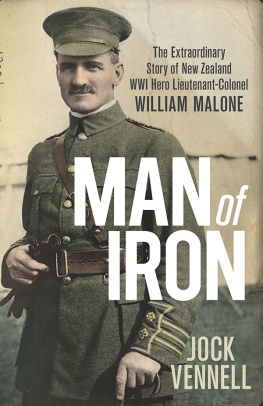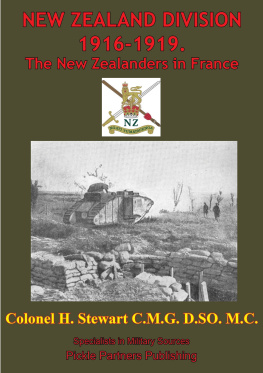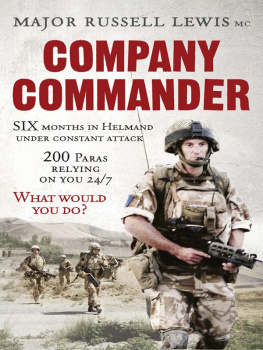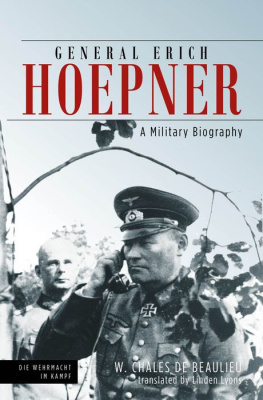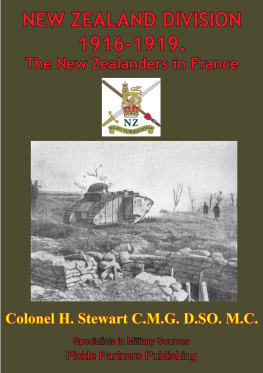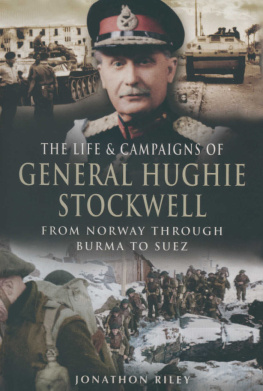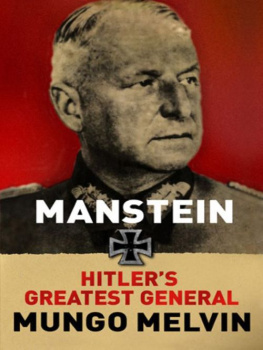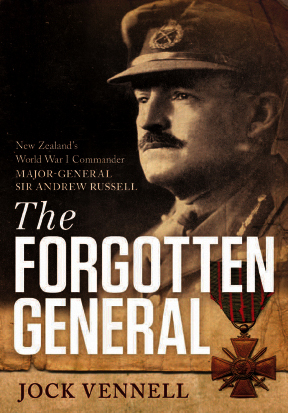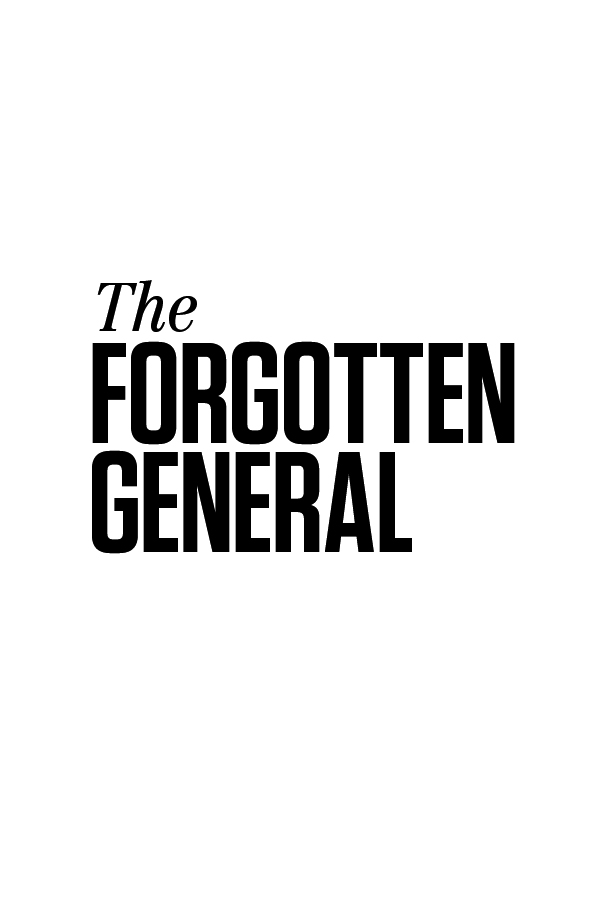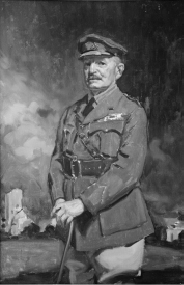
Painting of Major-General Sir Andrew (Guy) Russell KCB, KCMG, 1918.
First published in 2011
Copyright Jock Vennell 2011
All rights reserved. No part of this book may be reproduced or transmitted in any form or by any means, electronic or mechanical, including photocopying, recording or by any information storage and retrieval system, without prior permission in writing from the publisher.
Allen & Unwin
Sydney, Melbourne, Auckland, London
83 Alexander Street
Crows Nest NSW 2065
Australia
Phone: (61 2) 8425 0100
Fax: (61 2) 9906 2218
Email: info@allenandunwin.com
Web: www.allenandunwin.com
National Library of New Zealand Cataloguing-in-Publication Data
Vennell, Jock.
The forgotten general : New Zealands World War I commander,
Major General Sir Andrew Russell / Jock Vennell.
Includes bibliographical references and index.
ISBN 978-1-877505-07-2
1. Russell, A. H. (Andrew Hamilton), 1868-1960.
2. New ZealandArmyOfficersBiography. 3. Generals
New ZealandBiography. 4. World War, 1914-1918
New Zealand. I. Title.
940.40092dc 22
ISBN 978 1 877505 07 2
Frontispiece image courtesy of the Deans family collection;
all other internal images courtesy of the Russell family collection.
Maps by Morag Torrington
Index by Nicola McCloy
Set in 11.5/16 pt Minion by Post Pre-press Group, Australia
eBook production by Midland Typesetters, Australia
Contents
List of Maps
The Gallipoli Campaign: AprilDecember 1915
The Gallipoli Peninsula: 1915
The Western Front: 191518
Third Battle of the Somme: 15 September 1916
Battle of Messines: 7 June 1917
First Battle of Passchendaele: 12 October 1917
The Kaiserschlact: MarchJuly 1918
The NZ Division Advance: 21 August 11 November 1918
A born leader of men, with natural gifts for the military art which fell little short of genius.
So wrote Colonel Hugh Stewart, the official historian of the 20,000-strong New Zealand Division that fought in France and Belgium in World War I. His subject: the divisions commander, Major-General Sir Andrew (Guy) Russell. Seventy-seven years later, prominent military historian Dr Chris Pugsley went much further, rating Russell as not only the outstanding divisional commander among the British armies that fought on the Western Front, but the one military commander of genius that New Zealand produced in the twentieth century.
Under Russells leadership, Pugsley wrote, New Zealand produced the finest fighting division of all the British and Dominion divisions among the British armies in France, and perhaps the consistently finest division of any of the armiesBritish, French, or Germanthat fought on the Western Front.
Bold claims indeed, given that the New Zealand Division was only one of 60 British and Dominion divisions fighting on the Western Front by 1918, and there were many more French and German divisions. Many of these were first-class formations commanded by men of great military ability, among them Lieutenant-General Sir John Monash, who rose to command the Australian Corps; and General Sir Clive Currie, who led the four Canadian divisions.
There is no doubt, however, that by 1918 Russell had established himself as one of the outstanding divisional commanders on the Western Front. Under his leadership the New Zealand Division developed a reputation as one of the finest in the British armies that fought in World War I. In the last year of the war, and in recognition of his outstanding abilities, Russell was offered command of a full British Army corps (three to four divisions). For health, and perhaps other reasons, he was unable to accept.
Given his accomplishments, the larger question is why Russell is the forgotten general of New Zealands military history. In part it is because of the dominance of World War II history in general, and of Lieutenant-General Sir Bernard Freyberg in particular. In part it is because of the neglect of the historians themselves. This biography aims to restore Major-General Sir Andrew Russell to his rightful place as one of this countrys finest military commanders.
War service, however, occupied only a few years of Russells long life, whether as a divisional commander in World War I or as inspector-general of military forces and member of the War Council in World War II. His other careers as successful farmer, businessman, NZRSA president and prominent defence lobbyist spanned the Depression years of the 1920s and 30s, and finally the 1940s when war came much closer to home. By any measure, Russells achievements in these years, and the qualities of character and intellect that drove them, were extraordinary.
This project has been a challenging one. Apart from his diaries, Russell kept no personal records of his campaigns, wrote only one discoverable dissertation on military subjects, made few public speeches that have survived, and left no memoirs. By contrast, Sir John Monash, Russells much better known Australian equivalent from World War I, left a vast collection of personal papers, articles and lectures on military subjects, a collection of his war letters, a book on Australian victories in France, and at least two biographies. Russell, however, was a prolific letter writer. This book is based on these letters; material provided by the National Library and Archives New Zealand; research at the Imperial War Museum, the Army Museum, and the Liddell Hart Centre for Military Studies in London; and on family memories. Dr Chris Pugsleys work has been of great assistance, too, in examining Russells commands, both at Gallipoli and on the Western Front. In addition, The Russell Family Saga, an unpublished collection of letters and other family material compiled by Colonel Reg Gambrill in the 1970s, was an invaluable starting point.
The Russell story, however, is more than his alone. It is about the men he led for four unbroken years of war, starting with the raw and inexperienced brigade that arrived on Gallipoli in May 1915 and finishing with the lite division at the spearhead of the British counter-offensive that finally ended the war on the Western Front. In four years of war over 100,000 young men from a colonial nation of just 1.1 million20 percent of its male populationfought overseas, and nearly 60 percent of them were killed or wounded.
Too many of them would have been the leaders of New Zealands first post-war generationits outstanding politicians and civil servants; its doctors, lawyers, teachers and other professionals; its successful farmers, entrepreneurs and tradesmen; its nation-defining writers and thinkers. This is their story, as much as it is that of their commander, Major-General Sir Andrew (Guy) Russell. Proud of the men he led and dedicated to their welfare, he would have expected no less.
As darkness fell on 6 August 1915, 1900 men of the New Zealand Mounted Rifles Brigade, under the overall command of Brigadier-General Guy Russell, slipped quietly out from the northern end of Ari Burnu on the Gallipoli peninsula.
Their task was to capture key Turkish positions in the foothills of the Sari Bair range, allowing two columns of infantry to advance unopposed up three valleys (deres) and take the main Sari Bair ridge. Speed and surprise were vital, as the foothills had to be cleared by 11 pm to give the main assault columns enough time to reach the ridgelines before dawn.


